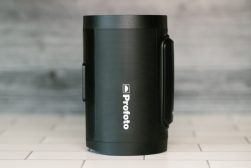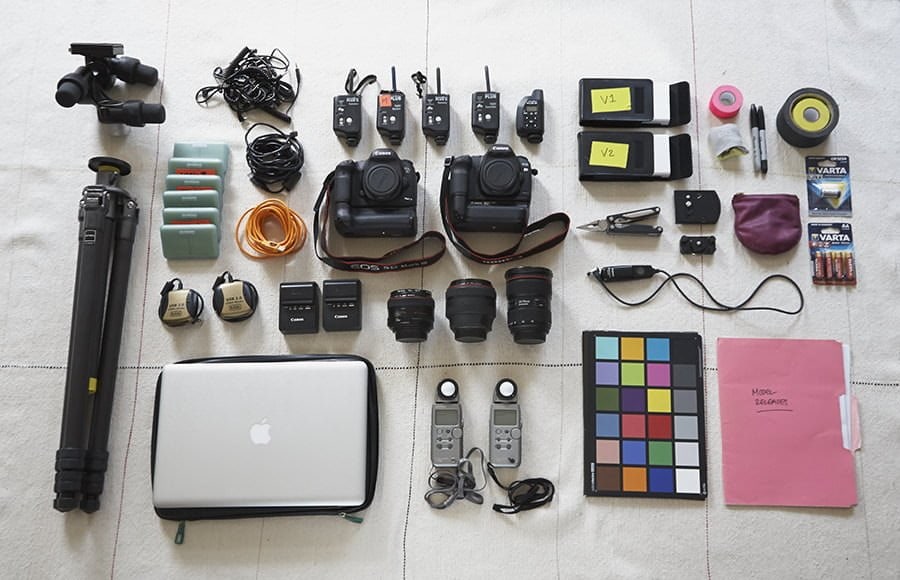



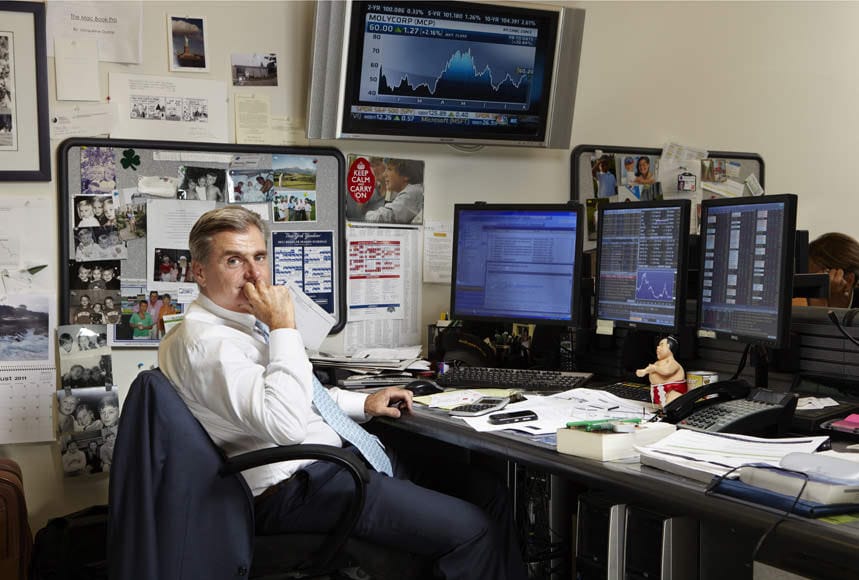
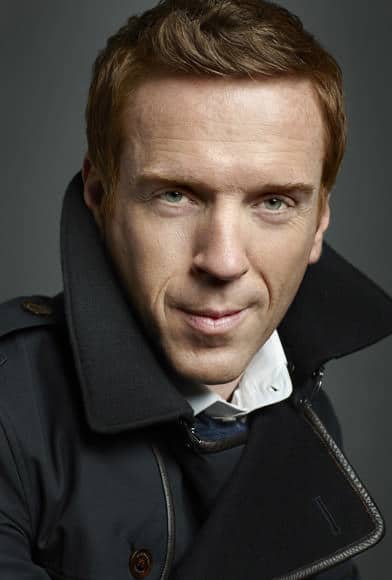

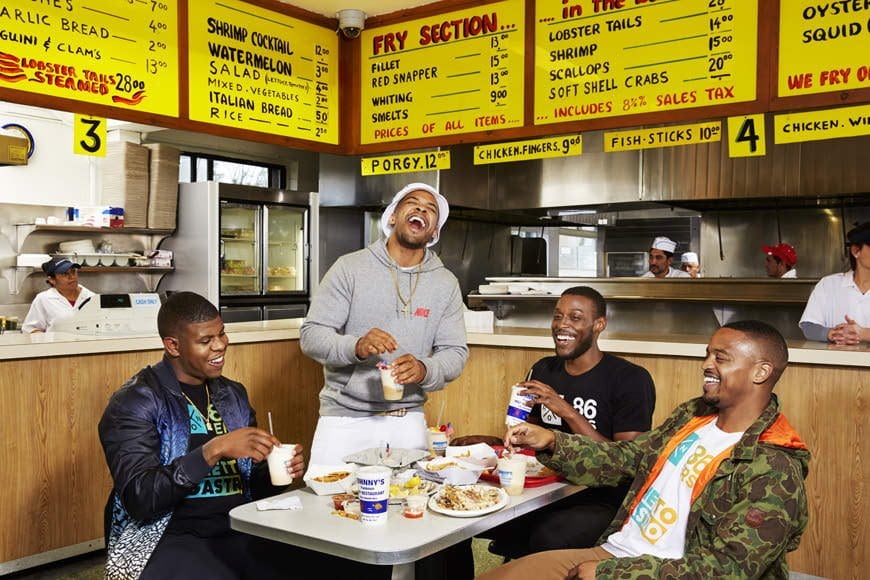
Mackenzie Stroh
Portrait | Last Updated: April 4, 2024
Hello, SHOTKIT followers! My name is Mackenzie Stroh and I am a New York-based photographer specializing in studio and environmental portraiture (guide). I have been a professional photographer for 16 years, working for a wide range of editorial and advertising clients.
I grew up in Western Canada and my love of photography began at age 12, when I took an introductory B+W photo class in junior high. The first camera I ever used was the workhorse Pentax K1000—and I spent a good part of my high school years using that camera to make portraits of my friends in a makeshift “studio” in our basement.
I went on to study film and photography at the Emily Carr University of Art + Design in Vancouver, BC—where I was introduced to the beauty of the Linhof Kardan 45S monorail 4×5 camera and (the very heavy) Speedotron strobes. I quickly became addicted to the incredible image quality of large format—and carried on shooting 4×5 for many years for my fine art projects.
In 2003 I completed my MFA in Studio Art/Photography at Concordia University in Montreal, Canada and promptly moved to New York City. Although I had shot a fair amount of editorial projects in Canada over the years, moving to New York really opened up a much broader range of editorial clients to me, working with photo editors who really embraced unique visions of portraiture.
For my first years in New York, I shot most of my editorial jobs on medium format film with the Mamiya RZ67 Pro II or the Hasselblad 500CM
, two cameras I love dearly (and occasionally still haul out to cuddle!). I love the richness and quality of film, waiting for the polaroids to develop, poring over contact sheets…so I was a bit of a late convert to the digital world.
Since completely switching over to digital about 6 years ago, I have primarily used Canon cameras for smaller editorial jobs, and hired a digital tech with a Hasselblad/Phase One back for larger editorial and commercial projects.
Lighting is an important element of my work, and even my portraits that have a “natural light” look are usually lit in some way. In part, this is because I like to have control over the mood of the portrait with the type of lighting I use, and I want the lighting to be secondary to the subject. For lighting, I use Profoto strobes: Profoto Pro 8A, Profoto Pro 7A, Profoto Pro 7B battery packs or Profoto B1 500 air kits, depending on the location.
I also use a lot of light modifiers: Profoto beauty dishes with grids + socks, Profoto reflectors
with grids, Chimera softboxes
with grids (x-small, small, medium + strips), small + medium Photek umbrellas
with diffusion, Elinchrom octabanks, gels, flags, v-flats, etc.
A great deal of my editorial shoots involve time restraints for setting up and shooting, so I like to keep my camera bags very organized with lots of backups of everything (cameras, cords, batteries…). Always good to be prepared for at least one piece of equipment to go down on any given shoot!
This is the gear I currently keep in my main camera cases:
– Canon 5D Mark III w/battery grip: My main camera for editorial shoots. I love the versatility of this camera when it comes to increasing the ISO and mixing light. Very user-friendly with lots of customizable settings. Great video quality.
– Canon 5D Mark II w/battery grip: backup camera
– Battery chargers x 2
– Extra batteries x 2
– Canon EF 24-70mm f/2.8LII : I love using Prime lenses, but when I need to work quickly between set-ups, this zoom is an excellent lens. Sharp and fast.
– Canon EF 50mm f/1.2L : A great all-around lens for portrait shots, environmental shots, tight locations.
– Canon EF 85mm f/1.2 LII : A beautiful portrait lens
– Tether kit: USB Tether cables x 3 + Altman Media Digital Tetherlock: I tether most of my shoots so I can really see what is going on using the larger laptop screen.
– Apple 17” MacBook Pro: I bought this laptop a couple of years ago and really souped it up so it could handle very large files at a high capture speed. I use Capture One Pro software.
– Canon shutter release: for those long exposures
– SanDisk Extreme IV Compact flash cards x 20: for when I do not want to or cannot tether (i.e., travel shoots or shoots with overbearing publicists!)
– UDMA Compact Flash Card readers – USB 2.0 x 2
– Colorchecker classic grey/color card: always good to have for postproduction/ retouching
– Gitzo medium tripod base: very solid + sturdy base, easy to adjust
– Manfrotto Bogen 405 geared head w/ extra plates: I love this tripod head because it can make very subtle adjustments and is really fluid. Just don’t drop it!
– Sekonic L-358 light meters x 2: I know a lot of digital folks don’t even use a light meter anymore—but I am old-school and still love a good ol’ meter reading!
– Pocket Wizard Plus III: for strobes, multi-channel, easy to use
– Pocket Wizard Plus II transceivers x 2
– Pocket Wizard Digital Transmitter + Digital Receiver
– G Drive Mini Portable hard Drives x 2: for shoot backups, I always backup twice before packing up
– Leatherman Multi-tool: an essential tool on set!
– Model releases: I use these mostly for travel shoots and have been a lot more careful in getting releases from subjects in the past few years
– Misc: Cleaning cloths, lots of various cords (doubles of everything)
– Expendables: different colored gaffer tape, sharpies, lots of extra batteries

Check out these 8 essential tools to help you succeed as a professional photographer.
Includes limited-time discounts.





